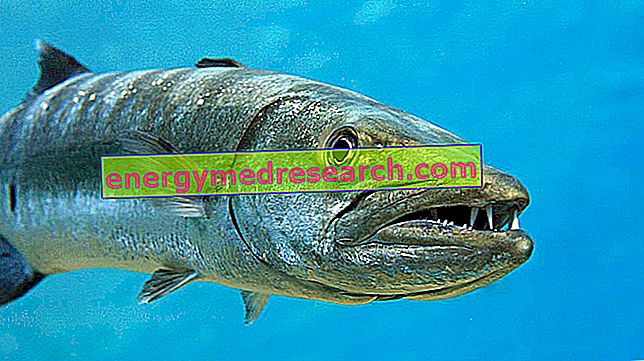
Ciguatera is a food poisoning caused by the consumption of fish products containing ciguatoxin .
Ciguatoxin is produced by various dinoflagellates (microscopic algae), in particular from Gambierdiscus toxicus ; these algae are the food of herbivorous fish of tropical coral reefs, which in turn constitute the food of predatory fish.
Therefore, herbivorous fish can take toxic algae and become, in turn, toxic to humans. Carnivorous fish, on the other hand, accumulate ciguatoxin by feeding on herbivorous fish containing the substance. For this reason, the fish species at the top of the food chain (barracuda, grouper, red snapper, shark etc.) are the richest species of ciguatoxin. For the same reason, old fish are generally more toxic and dangerous than young fish. Ciguatoxin concentrates in the internal organs of the fish. In addition, intoxication is transmitted to the infant with breast milk.
The ciguatera is also known as CPF (Ciguatera Fish Poisoning).
The problem mainly affects the tropical and subtropical waters of the Pacific and Indian oceans, as well as the Caribbean area. The cases of ciguatera in the Mediterranean are instead very rare. In the world there are estimated around 50, 000 cases of ciguatera per year and in total around 500 fish species are considered at risk.
Unfortunately, ciguatoxin is not inactivated either by cooking or by other means of preservation (salting, smoking, freezing, marinating). The oral ingestion of 0.1 µg (100 billionths of a gram) of toxin triggers the typical symptomatology in the adult individual. In the mouse it is lethal at doses of 0.45 µg / kg.
The symptoms of ciguatera include vomiting and watery diarrhea, which appear 1 to 6 hours after ingestion; these symptoms are followed by headaches, malaise, muscular pains, tingling of the mouth (drinking natural water gives the sensation of drinking carbonated water or a sense of electric shock in the mouth), paresthesia of the extremities, intense itching, movement disorders with difficulty of coordination, blurred vision, light intolerance, inversion of temperature perception (a hot shower appears cold and vice versa), hypotension, bradycardia and rarely convulsions and respiratory arrest. The ciguatera is rarely deadly.
Cardiovascular disorders usually disappear within 2-3 days, while neurological disorders persist for weeks or even years in severe cases; for this reason, long-term events can be mistakenly referred to as chronic fatigue syndrome or polymyositis.
No specific antidotes are available for the treatment of ciguatera, although in the literature there are reports of therapeutic successes deriving from the use of mannitol intravenously (0.5-1g / kg). The only recommended treatment is symptomatic and supportive of the patient's general condition.
Prevention in case of travel in tropical or Caribbean areas is achieved by avoiding the consumption of medium-large sized fish and discarding the internal organs of the animal; at the restaurant it is good to always serve whole fish, small enough to be contained in a dish; furthermore, the quantities of fish consumed should not be excessive.



